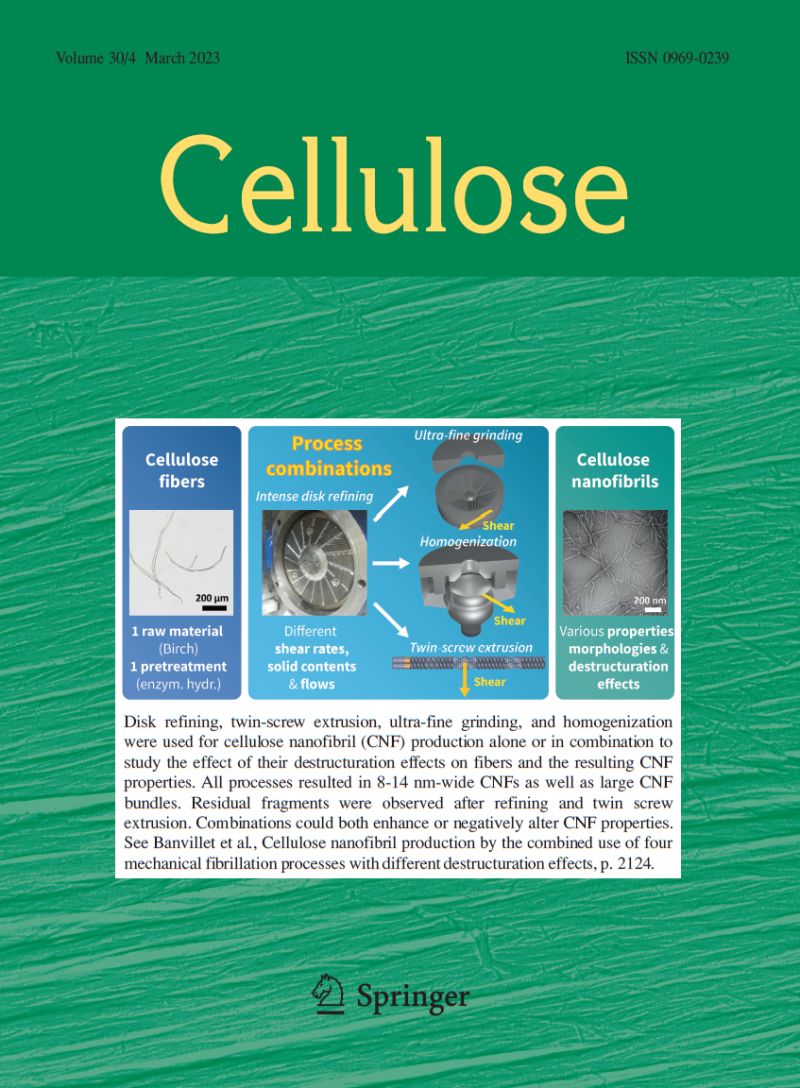Entrapment of PM2.5 and PM10 dust particles using bleached nanocellulose based filters processed via ultrafine grinding
Abstract
Nonwoven glass fiber-based filters are used to study particulate matter (PM) concentration in air. In this research, the collection of PM using filters made from bleached nanocellulose fibers known for their high aspect ratio is discussed. Elemental chlorine free bleaching followed by refining using Lab valley beater and Super masscolloider has been carried out. Refining time (20 and 60 min) and clearance (0.4, 0.1, 0.01 and 0) between grinding stones were used as parameters to produce different grades of micro and nanocellulose fiber-based sheets. Refining using Lab valley beater yielded short-length whereas refining using Super masscolloider yielded long-length and high aspect ratio fibers at zero clearance. The imaging of fibers and sheets prepared using vacuum filtration were carried out using SEM. Viscosity studies of the refined pulp slurry confirmed the shear thinning behaviour. Tensile strength, burst strength, and porosity of sheets were measured to know the influence of refining parameters. Refined nanocellulose and commercial glass microfiber-based sheets were used as filters in dust capturing of PM2.5 and PM10 using dust sampler. This study reveals that micro/nanocellulose sheets obtained from Super masscolloider refining may be used an alternative to glass fiber-based sheets in capturing the fine dust (PM2.5) having low moisture.


 求助内容:
求助内容: 应助结果提醒方式:
应助结果提醒方式:


